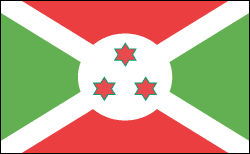Burundi History


Burundi's Brutal Civil War Nears Its End
The frequency of ethnic clashes increased, developing into a low-intensity civil war. A six-nation regional proposal to send troops into Burundi to maintain peace and order was devised in July 1996. Distrustful of the scheme, the Tutsi-dominated army led a coup deposing the Hutu president and installed Maj. Pierre Buyoya that month. More than 300,000 people have been killed in the civil war since 1993, with the Tutsi-dominated army and the Hutu rebel forces responsible for the slaughter. After several aborted cease-fires, a 2001 peace plan included a power-sharing agreement that has been relatively successful: Buyoya, a Tutsi, governed the new transitional government for the first 18 months; then, in April 2003, a Hutu president, Domitien Ndayizeye, assumed power. In Aug. 2005, former Hutu rebel leader Pierre Nkurunziza was elected president by Parliament. The peaceful transfer of power to a democratically elected leader seemed to indicate that Burundi's 12-year civil war was truly at an end. Peace talks between the government and Burundi's only remaining rebel group continued in 2006.
The government and the rebel group Forces for National Liberation, which was the last rebel group to engage in negotiations, signed a cease-fire in May 2008, signaling finality in the 15-year civil war that claimed some 300,000 lives.







